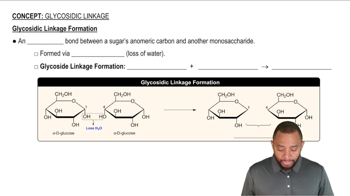Identify the disaccharide that fits each of the following descriptions:
a. ordinary table sugar
 Verified step by step guidance
Verified step by step guidance Verified video answer for a similar problem:
Verified video answer for a similar problem:



 3:39m
3:39mMaster Types of Disaccharides Concept 1 with a bite sized video explanation from Jules
Start learning